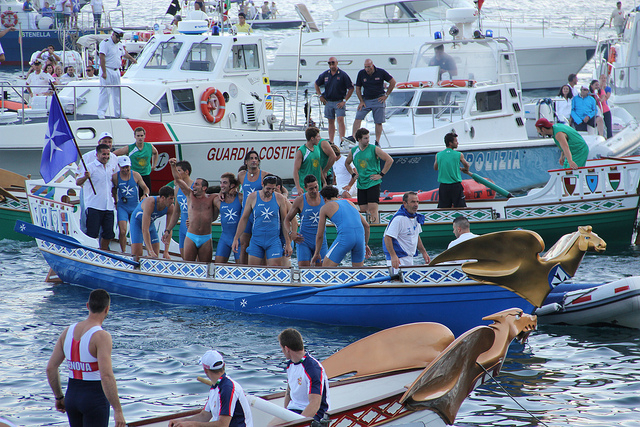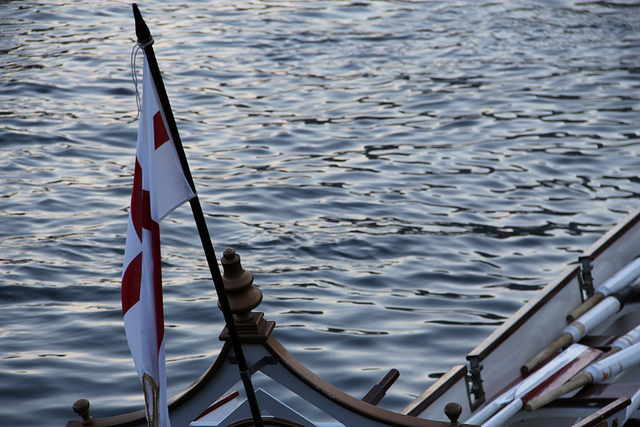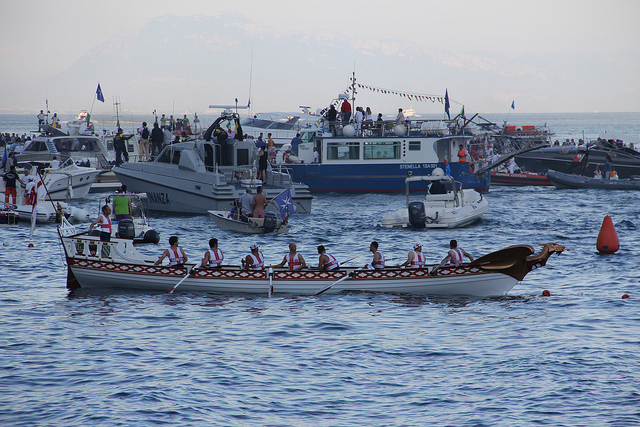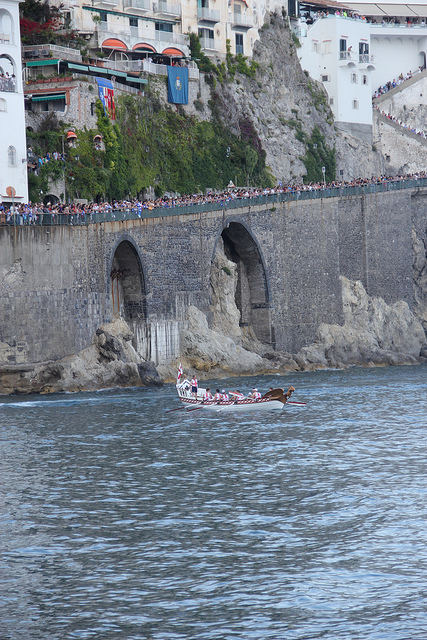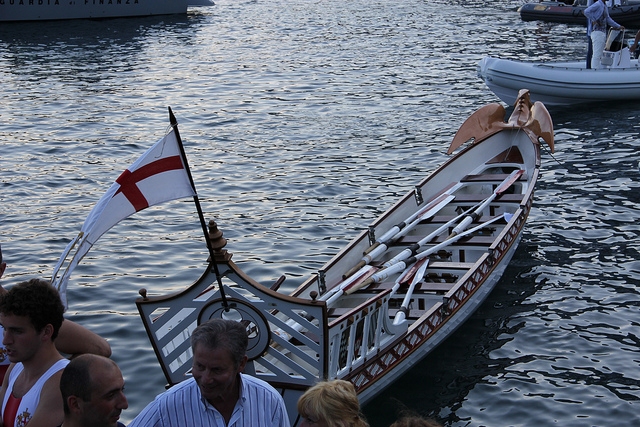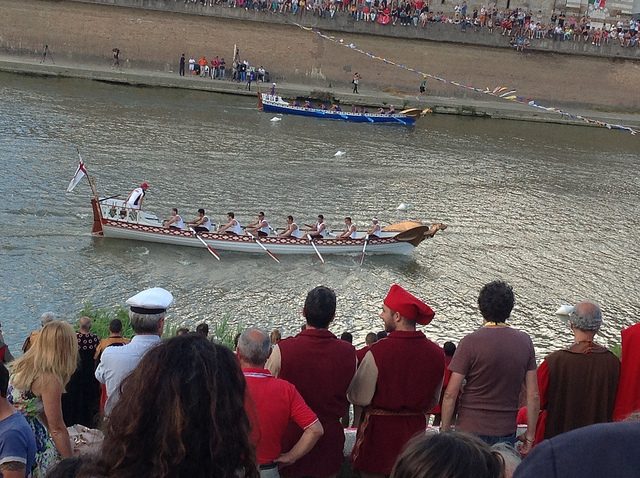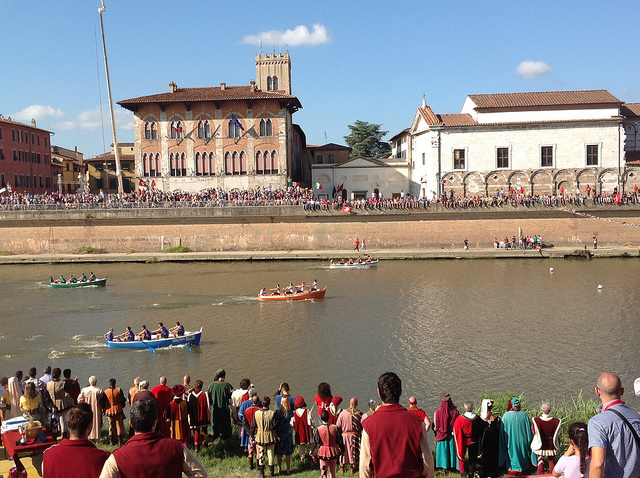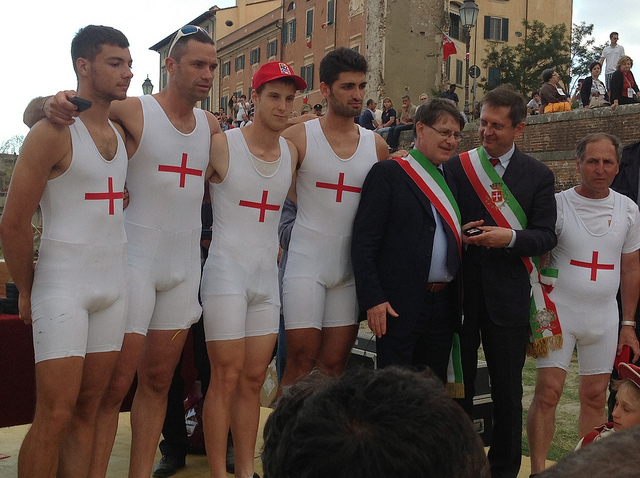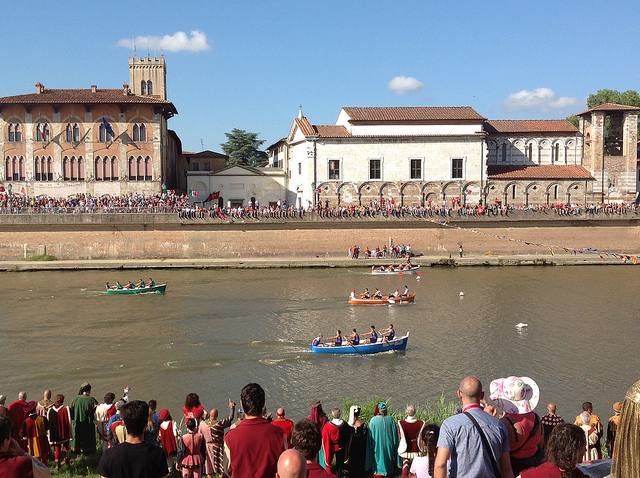The Regatta of the Ancient Maritime Republics
The Regatta of the Ancient Maritime Republics (also known as the Palio delle Antiche Repubbliche Marinare) is a sports event centered around a historical re-enactment first established in 1955 to commemorate the endeavours and rivalries of the most famous Italian maritime republics (Genoa, Pisa, Venice and Amalfi), in which the four vie against each other with four rowing crews. Competed under the high patronage of the President of the Italian Republic, the regatta takes place every year on a day between the end of May and the beginning of July, with the four cities taking turns as the host.
Each crew is composed of eight rowers and a coxswain, aboard fiberglass boats sporting different colours and splendid figureheads: from the winged horse of Amalfi to the dragon of Genoa, recalling the patron saint of the city, St. George; from the eagle of Pisa, symbolising the ancient bond between the Tyrrhenian republic and the Holy Roman Empire, to the winged lion of Venice, linked to the patron saint of the lagoon city, Saint Mark the Evangelist.
The boat race is preceded by a spectacular Medieval Pageant of the Ancient Italian Maritime Republics, which, in turn, is composed of the Medieval Pageants of each Republic, making for a total of 320 participants; the pace of the parade is beat out by the sound of drums and clarions, amid waving banners and flags, all in a joyful triumph of colours and flowers, as well as lavish costumes and accessories reflecting the styles of the period.
Each group has the task of memorising and performing episodes and characters linked to the maritime history of their city and the role it played in the Mediterranean.
Like Genoa, the other 3 Maritime Republics choose uniquely striking subjects and individuals for their historical parades.
Amalfi re-enacts the wedding that took place in 1002 between Sergio, the eldest son of Duke Giovanni I, and Maria, daughter of the Longobard Prince of Capua and Benevento; Pisa presents a sequence of figures that recall its medieval history, and Venice honours the Venetian patrician Catherine Cornaro who, in 1489 – as the widow of James II de Lusignan from whom she inherited the kingdom of Cyprus – arrived in the Lagoon to be welcomed by the Doge.

